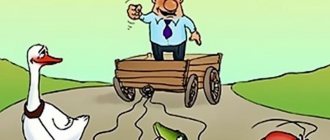It is impossible to imagine a person’s life and work activity without communication with other people. Those connections that take place almost every day are represented by various communities or groups. The smallest of them are the initial cells of society and constitute the fundamental basis of all other elements that make it up. In a small group you can see the manifestation of the realities of life, relationships and activities of most people. Various socio-psychological processes also take place in it. For each of its members they are part of the spiritual atmosphere in which they have to live and work.
The psychology of a group or collective forms in people some common needs, ideals, interests, etc. They are, first of all, those regulators of behavior that determine the activity of a person of a social nature. Small groups (teams) are constantly in continuous dynamics. The changes occurring in them are expressed by such socio-psychological processes as development and education, decision-making and leadership, conflicts, unity, etc.
Definition of the concept
What is team psychology? This concept is understood as a complex set of socio-psychological processes and phenomena occurring within a group. The atmosphere in the team and its psychology are directly influenced by:
- tasks facing a group of people;
- those real conditions in which the activities of team members take place;
- level of communication and relationships between people solving common problems.
In psychology, a team is a group whose creation is possible only when common goals and needs are identified. That is, those interests that will constantly strengthen and intensify as it becomes established and develops. Without this, it is inappropriate to talk about the team. Then we can only talk about a certain number of individuals.
A team in psychology is a social environment that includes completely different, dissimilar people. Each member of such a group has his own character and upbringing, abilities, worldview, etc. All of these are components of the team.
The peculiarities of a team in psychology are that all these people are connected to each other. Moreover, they are in this environment only because they have a common goal. To carry out certain actions designed to start the workflow, they have to communicate with each other. Collective psychology studies the characteristics of such communication.
From childhood we are adapted to the social environment. It is represented by the kindergarten group, the school social circle, and the student community. All these forms are future models of the labor collective.
Social roles in the team
Each team has production and interpersonal roles. Production includes:
- a coordinator who has developed organizational skills, selects and directs the activities of people to achieve the goal;
- an idea generator, or theorist, who creates multiple alternatives for solving situations, but is not used in practice;
- a controller who does not have a developed creativity, but is distinguished by his erudition and broad outlook; criticizes and helps improve ideas;
- the grinder connects the idea of solving one problem with other goals and objectives;
- an enthusiast encourages others to implement an idea;
- the benefit seeker ensures that each participant is interested in implementing the idea;
- the performer himself implements the idea, but at the suggestion of an enthusiast;
- an assistant who himself agrees to play supporting roles.
In a small team, one person has to play several roles, which often provokes conflicts. That is, the optimal team size is 8-12 people.
Based on the nature of interpersonal relationships, the roles of leading and led participants are distinguished. They are preferred and non-preferred, respectively.
Makarenko's theory
How to define the concept of a team in psychology? To do this, you need to familiarize yourself with Makarenko’s theory. It quite accurately describes the essence and development of a group of people. This theory is especially relevant when considering the psychology of children's groups. But it is also applicable for the educational, as well as for the working community of people.
Not every group can be called a team. To establish it, you will need to successfully complete a number of stages.
- Initial consolidation or formation. Similar work is carried out by the group organizer. However, at first this activity is of a formal nature. An example is the newly recruited workforce. The tasks of the organizer (director, manager) in this case include the formation of unity and cohesion of people in the motives, goals and values of their common activities.
- Promotion of group assets and strengthening of their role. To create a team, it is necessary to formalize its structure. Her role is assigned to an asset who carries out all the instructions of the leader, while putting forward her own demands to the group members. At this stage, a self-regulating and self-organizing system is being formed.
- Flourishing. At this stage, each member of the team makes correct demands on everyone else, as well as on himself. This stage of the formation of an organized group of people allows us to talk about it as a means of development and self-realization, as well as the moral formation of the personality of each of its participants. We can talk about the flourishing of a team when all its members express a unity of opinions, having common experience, stability of judgments and views. Such an organized group of people will have a direct influence on each individual.
- Transition to self-education. Each of the members of the team at this stage of its formation begins to make demands on himself, and their fulfillment becomes for people their internal need, which must be satisfied.
Methods and stages of formation
In psychology, a team is always a group of people controlled by an organizer. As described above, Makarenko argued that any group goes through stages of formation. His methods are still used in different types of groups.
Communication
In order to establish internal connections in teams of any size, the manager has the responsibility to unite people. This is an important stage that will help avoid a tense situation and reduce the risk of conflicts. A close-knit team is more inclined to self-government, distribution of roles, and selection of a leader.
How to improve communication within a team:
- Joint events for unity, so that people maintain connections outside of work.
- Formation of a common goal.
- Encouraging group work.
Management
Psychological methods of team management include the following points:
- Belief implies argumentation and logical explanation. It is used to remove psychological barriers, eliminate conflicts, and set goals.
- Imitation. Makarenko also said that you need to show your personal successful example to the team members. People will follow such a leader; they will believe in achieving their goals. The behavior pattern of a leader or organizer becomes a source for imitation.
- Involvement. A psychological method that was also used by Makarenko. Each participant is involved in finding solutions, and leaders are jointly selected through voting or discussion. Each participant feels that their opinion is valuable.
- Inducement. A positive way of psychological influence. It was actively used in Soviet times. This may include such forms of encouragement as adding a participant to the Honor Board and presenting certificates. This increases the moral significance of the team member.
- Compulsion. A psychological negative technique that is used in critical situations when the inaction of a participant can lead to damage to the entire team. The participant is forced to perform certain work.
- Requirements. This method can only be used by an authoritative leader who is respected in the team. Otherwise, this method will not work.
- Praise. One of the methods of positive psychological influence. It encourages the participant to do an even better job, a very motivating method. The negative opposite way is condemnation.
The team, which is in its infancy, takes advice well. This is a psychological method when a more experienced participant, leader or manager recommends to an inexperienced comrade what to do in a situation. If advice comes in response to a request, it commands respect from an inexperienced participant. Unsolicited advice can hurt.
Traditions
When considering the psychology of a team, it is impossible to ignore this integral and important element of it. Any group of people develops their own traditions, which invariably grow stronger over time. This concept refers to certain forms of life activity of any group that reflect the interests, norms and desires of each of its participants.
Traditions are the source of new general rules, as well as empathy and mutual understanding between people. Moreover, they are large and small. The first of these two types of traditions are public events and events. When preparing and conducting them, people develop a sense of respect and common pride. Small traditions are, as a rule, daily. They allow you to develop discipline, observe norms, behavioral habits, and also teach all group members to maintain order.
Goals
This is also one of the components of team psychology. It represents a statement of general objectives. According to Makarenko's theory, people should always have a specific goal. At the same time, the author distinguishes between close and medium, as well as long-term perspective. The first of these types of goals can be set for the team at each of the development stages described above. The main thing is that each of the participants in the organized group is interested in achieving it and anticipates the result of the implementation of the plan.
The average perspective involves the creation of a general project for a particular business. A long-term goal, as a rule, is set at one of the last stages of a team’s development. Such a perspective has a socially significant nature and requires large costs for implementation and organization, combining social and personal needs. An example of such a goal is the successful completion of schooling, as well as the determination of a professional path for children.
In general, such a system should be built in such a way that each member of the team constantly strives for one or another goal with a sense of anticipation, expectation, and the desire to complete the task. Such a process will accelerate the personal development of all group members.
Recommendations for managers
A well-coordinated team is the merit of the head of the enterprise. He must approach the organization of the work process from a psychological point of view. Resolving conflict situations and giving good advice to middle management is the right way. The “correct approach” to employees has many synonyms that every boss should know:
- Validity of orders and claims.
- Selection of a system of methods and techniques.
- Correct distribution of powers.
- Attentive attitude towards subordinates.
- Participation in team activities.
Equality and adequate assessment of employee performance must come first. It is difficult for a twenty-year-old guy to find a common language with a lady of Balzac’s age, but if a young man looks at a colleague as a mentor, and he, in turn, sees a student in the young employee, cohesion will occur, regardless of the age gap.
Even if the team is a single whole, constant work is required to maintain this state. It can be disrupted by any external factor: the appearance of a new team member, a conflict situation or a difference of opinion. Success will depend on a number of factors and sometimes training alone is not enough.
Signs of a developed team
When can we talk about the final formation of the group? According to the theory of collective psychology created by Makarenko, this will be indicated by the following signs:
- The presence of a major tone. All team members must show positivity and optimism, as well as a readiness for active action.
- The presence of pride in the team. Each of its members should have a sense of the value of the group of which he is an integral part. At the same time, a sense of self-esteem invariably arises.
- Feeling of security. Each member of the team must have it.
- Friendly unity.
- Restraint in words and emotions.
Psychological climate
This term was first used by N. S. Mansurov, who studied psychology at work in the team of a manufacturing enterprise. This concept included the nature of emotions that arose in the relationships between employees, and was based on the coincidence of characters, inclinations, interests and sympathies.
In psychology, the psychological climate in a team is considered as a system consisting of three spheres:
- Social climate. In this case, we mean the group members’ awareness of tasks and goals while respecting their responsibilities and rights.
- Moral climate. This area represents the values that are accepted in the group, as well as their consistency, acceptance and unity.
- The actual psychological climate. It represents informal relationships between people in a team.
The psychology of climate in a team as a phenomenon has its own characteristics. It is created by the people themselves, who are able to influence it, changing and improving this category.
Conditions for forming a cohesive team
A cohesive team can be built under the following conditions:
- all members have common views, values, worldview;
- the team is homogeneous in age;
- an atmosphere of general psychological safety and acceptance has been created in the team;
- the leader is an effective employee and is able to take cohesion measures;
- all employees are involved in active, emotionally rich activities that matter to everyone.
The team also unites in the process of fighting with rivals (another team) for the best achievements.
Motivation
The manager must know how to organize the work of the team in such a way that each employee is active and interested in achieving a common result. Each employee will be motivated and involved in joint activities if they are aware of their involvement. The desire and passion for working together as a team depends on motivation. The level of interest can be determined by the employee’s activity indicator.
Focus
Purposefulness presupposes a community of interests and the desire for common results. It depends on how closely the personal goals of each employee are related to the team goals, whether they complement each other or, conversely, contradict each other. The level of focus is determined by the degree of interest of each team member in achieving common goals. At the same time, each employee must be results-oriented in his activities.
Structurality
A structured team is a team in which each member clearly knows his duties, functions and responsibilities. When solving complex problems, employees can be easily divided into groups. Issues of insurance and duplication are also easily resolved.
Integrity
The extent to which employees are interdependent on each other affects their commonality and compatibility. To determine the integrity of the team, find out the relationship between individual and group activities.
Organization
A team united by a common goal is assembled and organized. He easily organizes his activities in accordance with the plan. Such a team is easy to manage, since each member is punctual, efficient and self-organized.
Subject to quality management decisions, joint work on the ground is carried out according to the established plan. Each employee is responsible for his own area of work, taking on a delegated degree of responsibility.
Consistency
A close-knit, friendly team works faster and more efficiently. Coherence means that all actions are harmonious and team members interact with each other. The degree of conflict is low, since management decisions eliminate contradictions and disunity.
Efficiency
Only if every employee is interested in the business, and the entire team works harmoniously, can high results be achieved. In a friendly team, each employee knows that the efficiency of the entire enterprise depends on the effectiveness of his activities, therefore he will perform his duties efficiently, taking responsibility for his area. In a team of like-minded people, everyone not only goes to work, but works for results.
Personality and team
Certain relationships can develop between each individual and group, the development of which most often occurs according to one of three scenarios:
- The individual is subordinate to the collective. This happens either formally or takes place in practice.
- The team is subordinate to the individual. In this case, it is possible to change the structure of the group, as well as its social experience. Formal leaders and authorities are called into question.
- Harmony arises between the team and the individual. This option is optimal. A person and a group in psychology are considered to have reached harmony if each of the group members actually, and not formally, shares common values and beliefs, observing them constantly. Sometimes harmony is confused with coexistence. However, with the latter option, the team is considered as such only formally.
The emergence of informal groups is often observed in labor or other communities. They are based on people's sympathy, their interests and friendship. Such groups, in turn, influence the values of the team. Sometimes they change his educational directions. In this case, the team can turn into either a constructive system or a destructive one.
Diagnostics of relationships in a team
The success of team development is studied using a sociogram. It is based on the identification of referent (significant) people and groups, which in turn are made up of preferences, and preferences from sympathies.
Each team member is asked to identify two pleasant people and two unpleasant ones (with whom he would like to work and with whom he would not want). All results are recorded in the form of a circle (the initials of the team members). Arrows (connections) are placed between the initials. Such a sociogram allows you to:
- identify a potential asset;
- potential leader;
- outcasts.
Building relationships
The creation of a team in social psychology is considered through the passage of five stages. Each of them serves to establish relationships between its participants:
- Lapping. At this stage, people mask their true desires and feelings. They try to assess each person's interest in the common cause.
- Close combat. At this stage, each member of the team begins to show his individuality and characteristics, claiming one or another role. In this case, the existing contradictions become obvious, which the participants are trying to balance in one way or another.
- Experiments and improvement. At this stage, all team members begin to pursue common goals rather than personal ones. They assess the potential of the team, as well as opportunities to improve its work.
- Efficiency. Having moved to this stage, each person begins to feel proud of being a member of the team. Each employee overcomes all difficulties that arise using their creative potential.
- Maturity. At this stage, all conflicts between employees are resolved in a calm atmosphere. The goals of each team member coincide with the goals of the organization.
Team building tools
It is very important and necessary to use auxiliary methods of team building in team building, because they help reduce the time it takes to create a great team of specialists. If we summarize these methods, we get a small list of effective tools.
1
Traditions
Corporate traditions are considered one of the best ways to unite people. Finding himself in his team, every person wants to feel comfort and peace. And traditions contribute perfectly to this. You can start each workday by watching funny videos with the whole team or end it with a 15-minute tea party with all sorts of goodies. During the day, you can organize a general meeting for a playful workout, and on Fridays everyone can go to the pool together, ending the work day an hour earlier. There are many options, and each of them brings team members closer to each other, allows them to open up and always feel at ease.
2
Meetings
Meetings should not be treated as something very formal. You can get together at work or in an informal setting. At such meetings, it is useful to discuss both work issues and something that does not concern them at all. Meetings, by the way, can also be made a tradition. Once a day, once a week or a couple of times a month – it really doesn’t matter. The only important thing is that everyone is present and feels like a valuable member of the team. In addition to the issues discussed at the meetings, you can congratulate someone on their successes, praise them, and even reward them with symbolic gifts - this will greatly increase the positive impact of the meetings.
3
mass media
We are, of course, talking about media such as corporate newspapers or magazines. Such publications should cover the life of the team: successes, news, achievements, significant events and dates, suggestions and wishes of employees, etc. All this helps people get to know each other better, find common interests and common ground, open up and become more friendly. If the corporate publication is made by the employees themselves on a creative basis, you can make sure that different team members and their combinations are responsible for the preparation every month.
4
Rest
Team building and team building is not only work, but also fun. Traveling together and having a good time is a great way to make people friendlier. It perfectly increases productivity, relieves tension and stress, allows people to see each other in a new light, promotes the development of creativity and innovative thinking, and immerses the team in a relaxed atmosphere. A lot of activities can be suitable for relaxation: team-building training, hiking in the mountains, swimming in the lake, playing football, an adventure quest and much more. But the most interesting thing is that spending time together builds team spirit even when people don’t think about it.
5
Gamification
Gamification is the use of gaming technologies and techniques in life, work and learning. It allows you to make even the most boring activity unusual and interesting, and for team building it is simply an indispensable tool. Let team members complete their tasks, solve problems, and achieve results as if they were going through levels of a game called “Job” or “Project.” Introduce a system of points, badges and rewards, skill levels and titles. By achieving a new goal, a team member can earn, for example, 5 points, receive the title of “Connoisseur” and a movie ticket for the weekend. Others will see this result, and this creates a positive attitude towards work and a competitive spirit. By the way, many thriving companies already use gaming techniques in their work, and their teams are incredibly productive and efficient.
However, we will talk about successful teams later, but for now let’s say a few words about what events contribute to competent team building, team unity and organizing the interaction of people in a team in the best way.
Personal development
The psychology of people in a team invariably leads to the development of the individual, which takes place when he goes through three stages:
- Adaptation. The new employee masters the norms of the team, the behavioral characteristics and values of its members.
- Personalization. At this stage, the emergence of the personal and the general is inevitable. A person begins to search for ways to express himself.
- Integration. There is an aggravation of the social and individual. The personality begins to show itself. Whether or not the team accepts all the shortcomings and advantages of the new employee.
Contradictions that arise during the integration process are not always successfully resolved. If this happens, then the person becomes maladapted, isolated and expelled from the team. In some cases, he voluntarily leaves it. In this case, the stage of integration is replaced by disintegration.
"Palace Coups"
Once again the name speaks for itself. During this period, everyone has already gotten used to it and understands what can be expected from other participants, so the time comes when the active struggle for the place of leader intensifies. If there is already a leader in the team, then it is important for him to maintain his position, or if he feels weak, it is better to immediately give way to a stronger candidate. This is a rather difficult period in the life of any team, since separate groups can form here that will impose their opinions on others. There is a big risk that the team will simply fall apart.
Team functions
In relation to the individual, an organized community:
- provides protection and support;
- satisfies needs for interaction and communication, as well as a sense of group belonging;
- allows a person to self-realize.
In addition, each member of the team can take a different look at themselves and their values, as well as their social significance and role. This stimulates a person to self-improvement and self-development, revealing his creative potential.
Each team has its own system of social control. It represents a set of ways of influencing all its members in the form of prohibitions, punishments, instructions, beliefs, etc. That is why the formation and development of a team largely depends on the activities of its leader.
Factors
To understand how to unite a team, you need to understand what nuances lead to disunity. Moreover, at the initial level, it is necessary to remember that the formation of a team occurs in stages. Any team building is a team effort and it requires immersion. Below are definitions of the main conditions/criteria for forming a cohesive team:
- coincidence of interests;
- the team consists of people of the same age category;
- goodwill;
- general psychological safety;
- the desire to consider and accept the opinion of another person;
- vigorous activity;
- work for results;
- a positive example in the person of the leader.
Disunity may not even be caused by internal conflicts, but by the fact that the company employs people of different ages.
Factors
Personnel Management
Proof of a manager’s good work is the internal readiness of each member of the team to work for the benefit of the organization and unquestioningly fulfill all the requirements of their superiors. This is the psychology of team management. However, what will achieve such a return from staff? How to ensure that people work to their full potential and bring maximum benefit? The psychology of team management considers achieving such a goal through the use of methods such as employee motivation, as well as their stimulation. The success of the event will depend on:
- comfort in the workplace;
- convenient equipment;
- good (non-conflict) relationships in the team;
- suitable salary;
- opportunities for personal and career growth.
To determine the need for each of the above factors, psychological methods of motivating personnel are used. The need for a particular factor is established by filling out special questionnaires, questionnaires and tests by all employees.
The benefits of teamwork
- Working in a team, you can share your accumulated knowledge and skills, and in return gain new experience.
- A person can perform much more serious and large-scale tasks than he could do alone.
- You can receive some advice from your colleagues and feel their support. Often this applies not only to work activity, but also to everyday life.
- In a team, people learn responsibility. Moreover, here they can be responsible not only for their own work, but also for the work of their colleagues.
- A person can express himself creatively, learn to make general decisions, participate in various discussions and debates, and express his point of view.
- Each member of the team has the right to point out to others their mistakes and blame them if they do not adhere to moral standards.
Features of the teaching staff
According to Makarenko, it is impossible to create an organized group of children in the absence of a normal community of teachers. The staff of educational institutions has a certain organizational structure. It determines the psychology of the teaching staff, consisting of relationships of dependence and mutual control of each of its members. Within the boundaries of this structure, methodological associations of class teachers and subject teachers operate. Pedagogical councils and school administration also carry out certain activities.
In a team of teachers, there is a certain division of labor. And the process of their work is impossible without cooperation. These two factors, which are components of the psychology of the teaching staff, require teachers to be able to cooperate with each other. This concerns obtaining the necessary information and discussing problems. In the psychology of the work team, including the pedagogical one, it is necessary to understand the point of view of a colleague, its acceptance, addition or reasoned rejection. These and many other skills and abilities are very important for teachers. They are acquired when a teaching staff is formed or when newcomers join it. The effectiveness of teachers’ work depends primarily on the psychological climate prevailing in the educational institution. This factor determines the teacher’s well-being at school, his desire as a professional to be fully dedicated, etc.
Lecture on the topic: “The concept of a team as an educational form of group development”
The concept of a team as an educational form of group development. Essence, structure and functions of the student body. Stages of formation of a children's team.
Education in the team, for the team and through the team was the fundamental tenet of the Soviet theory of education. At the present time, when an attempt is not only proclaimed, but also an attempt is made to implement the ideas of personality-oriented pedagogy, many have either stopped talking about the problems of forming a children's team, or are trying in every possible way to veil this problem, using the terms: community, group, association, cooperation, etc. But even now, collective education is one of the general areas of educational work with children's groups (no matter what they are called). Abroad, the idea of children living together has always been and is relevant, but the concept of “team” is not used there and the emphasis is on the socio-psychological aspects of intra-group relations. In Soviet times, the main attention was paid to the ideological and political impact of the collective on the individual, its corrective and controlling function. Man is a social being, and from an early age he must live together with other people, interact and cooperate with them. This can only be learned through group communication and interaction, whatever it is called.
At the same time, long before Soviet times, the educational significance of collective, group interaction was realized. In the 18th century The idea of joint collective life was implemented in orphanages by I.G. Pestalozzi. German teacher V.A. Lai paid great attention to the issue of school communities in which the joint practical activities of students contribute to their socialization. Indications of the special nature of the relationships that develop between children in group communication can be found in Russian pedagogical literature of the second half of the 19th century. Domestic teachers P.F. Kapterev, A.F. Lazursky, N.I. Pirogov, K.D. The Ushinskys sought to maintain an atmosphere of camaraderie and mutual assistance among children and saw in spontaneously emerging children's communities a possible source of new relationships that would contribute to the development and upbringing of children. They used concepts such as “children’s mass”, “children’s community”, “school corporate spirit”.
In practice, the theory of collective education was practically embodied in the pedagogical experience of communal schools. One of these schools, as part of the First Experimental Station for Public Education, was headed by ST. Shatsky. He proved in practice the possibility of effectively organizing a school team.
A.S. made a significant contribution to the development of this problem. Makarenko. First of all, the role of the team in raising children was conceptualized in a fundamentally new way, which turned into a subject of educational influence influencing each member of the team. According to A.S. Makarenko, the teacher is only at first a full-fledged organizer of the children's team. As its educational functions develop, self-government bodies are created and collectivist relations are formed, it increasingly fades into the background. These ideas were developed in the pedagogical activities of V.A. Sukhomlinsky.
What does the collective give to the individual?
?
- Satisfies the individual's needs for communication and self-affirmation;
- is the sphere of her life activity (a person is constantly in some kind of association, entering into various interactions and relationships with other people);
- rich emotional experience;
- behavioral experience, the social value of which is very significant in a person’s subsequent life;
- through communication and interaction with others, creates conditions for learning about oneself, one’s strengths and problems;
- provides an opportunity to show your individuality, express yourself by choosing what is interesting and matches your strengths and abilities.
A team is
a group of people of a high level of development, mutually influencing each other and connected by a commonality of socially determined goals, interests, needs, norms and rules of behavior, jointly performed activities, unity of will expressed by the leadership
Children's group
- a children's group in which a system of highly moral and aesthetically educational social relations, activities and communication is created, contributing to the formation of the personality and development of the individuality of each of its members.
The characteristics of a team
include:
- the conscious nature of bringing people together;
- unity of common and personal goals of team members;
- relative stability and duration of operation;
- a clear organizational structure of external and internal connections and relationships;
- the presence of bodies for coordinating activities (self-government bodies);
- generally accepted norms of behavior and general value orientations (value-orientation unity);
- intellectual and moral atmosphere and favorable climate;
 security of each team member and a sense of emotional comfort;
security of each team member and a sense of emotional comfort;
9) cohesion;
10) collective activity, a single result of which is achieved through the efforts of each member of the group;
11) interpersonal relationships are collectivist, that is, they are determined through the attitude towards a common cause.
In a team of a high level of development, the position of the individual is definitely stable, therefore he is free in his behavior. The leader of the group is a respected majority or a person with a social value orientation. The matter is perceived as personally significant for each member or for the majority. The leader is the most experienced and skilled comrade whom the group has empowered. The attitude towards the group is open, comradely, towards oneself - free manifestation of the “I”, initiative. The team is taken for granted, with responsible dependence, in which members are united by friendship.
Suppression and leveling of personality occurs in poorly organized groups that have not reached the level of a collective.
The team creates comprehensive opportunities for the manifestation and development of each individual.
Team functions:
- Regulatory
- a bearer and promoter of certain ideological, moral and social attitudes.
- Organizational
- the main form of organizing children's life activities.
- Consolidation (unifying)
- a form of unification, cohesion, cooperation.
- Stimulating
- encouraging the individual to engage in morally valuable activities and inhibiting negative intentions and actions.
- Educational
— purposeful influence on each individual by members of the team and the teacher and formative interaction.
Collectives , according to the degree of complexity
of interpersonal relationships , are
primary and
secondary Primary teams are teams in which there is direct interpersonal The secondary team more complex in its composition - consists primary
diverse in the nature of activity, organization, relationships, interests, content of communication, composition (circles, units, ensembles, studios, detachments, brigades, teams).
An example is a school-wide team. The essence of the life of the school community lies in the active movement and interaction of contact groups both at the inter-age and inter-content levels. A.S. When organizing the educational team, Makarenko took care of the correct relationship between the primary (contact) and the general team. As a primary unit, he created a multi-age detachment,
whose members studied in different classes, but worked together in production. The relationships in such a detachment resembled the relationships between older and younger children in a normal family. At the head of the detachment was a commander who organized a certain area of work and was responsible for the activities and behavior of all members of the detachment. The size of the squad can vary from 10 to 15 people. If the primary team is made up of a larger number of members, it is weakly subordinate to the commander and he is not able to cover all members of the detachment. Therefore, a class of 25-30 people is cumbersome to manage. This disadvantage can be overcome by dividing it into micro-teams.
Each emerging or already created team has its own internal structure, consisting of an activist (initiative group), various mobile micro-groups and alternating people responsible for each micro-group in one form or another of joint activities.
By content of activity
groups can be
educational artistic and creative, club, sports, etc. According to a
given function: production
children's and pedagogical teams of educational institutions).
By socially fixed position:
formal
(legally fixed status, socially assigned activity);
informal
(voluntary associations based on interests, sympathies, etc.)
By duration of operation:
permanent, temporary
(summer health camp team, brigades, etc.),
situational
(combined teams to perform a specific task, creative work groups in KTD, etc.).
Stages of team development
The teacher needs to understand that the process of forming a team goes through several
stages (stages) of development on the path of becoming a subject of the pedagogical process. His task is to understand the psychological and pedagogical foundations of the changes taking place in the team and in each student. There are different definitions of these stages: diffuse groups, associations, cooperations, corporations, teams; “sand placer”, “soft clay”, “flickering lighthouse”, “scarlet sail”, “burning torch” (A.N. Lutoshkin).
A.S. Makarenko identified 4 stages of development of the team according to the nature of the requirements presented by the teacher and the position of the teacher.
1. The teacher organizes life
and the activities of the group, explaining the goals and meaning of the activity and
making direct, clear, decisive demands.
The active group (the group that supports the requirements and values of the teacher) is just emerging; the level of independence of the active members is very low. Developing personal relationships predominate; they are still very fluid and often conflicting. Relations with other groups develop only in the system of personal relations between members of different groups. The first stage ends with the formation of an asset.
Subject of education
- teacher.
2. The teacher’s demands are supported by the activists; this most conscious part of the group places them on their comrades; the teacher’s demands become indirect.
The second stage is characterized by the transition of the collective to self-government.
The organizational function of the teacher is transferred to the permanent and temporary bodies of the team (active), a real opportunity is created for all members of the team to actually participate in managing their lives, the practical activities of students become more complicated, and independence in its planning and organization increases. The joy of creativity, achieved success, and self-improvement is experienced. The asset becomes the support of the teacher and authority for other members of the team. He not only supports the teacher’s demands, but also develops his own. His independence is expanding. The teacher helps strengthen the positions of the activist group
and expand its composition, involving all children in joint activities, specifies tasks in relation to individual groups of students and each member; performs a communicative function - organizing and establishing relationships within the team. More stable interpersonal relationships and relationships of mutual responsibility are established. Business relationships are developing. Motivational and humanistic relationships emerge. A collective identity is formed - “We are a collective.” Real connections are formed with other children's groups
Subject of education
-
asset.
3. Most of the group members make demands
on their comrades and themselves
and help teachers correct the development of everyone.
Demands
are made by
the collective in the form of Public collective opinion
is a cumulative value judgment expressing the attitude of the collective (or a significant part of it) to various events and phenomena in the life of society and the given collective. The emergence of the ability to form public opinion indicates a high level of development of intra-collective relations and the transformation of a group into a collective.
Motivational and humanistic relationships are formed between individual groups and team members. In the process of development, children's attitudes to goals and activities, to each other change, and common values and traditions are developed. The team develops a favorable socio-psychological climate of emotional comfort and personal security. The team has systematic connections with other teams in the educational institution and outside it. Complete self-government and self-government.
The subject of education is the collective.
If the team reaches this stage, then it forms a holistic, moral personality and turns into an instrument for the individual development of each of its members. Common experience, identical assessments of events are the main feature and most characteristic feature of the team. The teacher supports and stimulates
4. All members of the team are encouraged to self-education, conditions are created for the development of the creative individuality of each member of the team. The position of the individual is high, there are no superstars or outcasts. Connections with other groups are expanding and improving, and activities are increasingly prosocial in nature. Every pupil
Thanks to the firmly acquired collective experience,
he makes certain demands on himself,
the fulfillment of moral norms becomes his need, the process of education turns into the process of self-education.
Subject of education
—
personality.
The teacher, together with the activists, relying on the public
opinion of the children’s team, supports, preserves and stimulates the need for self-education and self- improvement
The process of team development does not proceed as a smooth process of transition from one stage to another; leaps, stops, and backward movements are inevitable. There are no clear boundaries between the stages—opportunities for moving to the next Stage are created within the framework of the previous one. Each subsequent stage in this process does not replace the previous one, but is, as it were, added to it. The team cannot and should not stop in its development, even if it has reached a very high level. A.S. Makarenko believed that moving forward is the law of life
for a children’s group, stopping is death.
Dynamics of team formation
can be generally determined
by a combination of the following characteristics:
common socially significant goals, joint organized activities, relationships of responsible dependence, rational distribution of social roles, equality of rights and responsibilities of team members, active organizational role of self-government bodies, sustainable positive relationships, cohesion, mutual understanding, collectivist self-determination members, collectivist identification, level of reference (relationships of significance connecting a subject with another person or group of persons), the possibility of individual isolation in a group.
Depending on the level of development, the behavior of a group in a stressful situation is indicative. Groups with a low level of development show indifference, apathy, and become disorganized. Mutual communication takes on a conflicting nature, and work productivity drops sharply. Groups of an average level of development under the same conditions are characterized by tolerance and adaptation. Operational efficiency does not decrease. Groups with a high level of development are the most resistant to stress. They respond to emerging critical situations by increasing activity. The efficiency of their activities not only does not decrease, but even increases.
Non-traditional lessons
In the mid-70s, in the domestic school there was a tendency towards a decrease in the interest of schoolchildren in classes. The practice responded to the escalation of the problem with non-standard lessons
. This is an impromptu learning activity that has an unconventional structure. Today there are several dozen types of non-standard lessons: an “immersion” lesson, a lesson in business games, role-playing games, a press conference lesson, a competition lesson, a KVN lesson, a theatrical lesson, a computer lesson, a lesson with group forms of learning, a lesson in mutual learning of students, a creativity lesson , lesson-auction, lesson-assessment, lesson-creative reports, lesson-competition, lesson-fantasy, lesson-lecture - “paradoxes”, lesson-concert, lesson-dialogue, lesson - “the investigation is carried out by experts”, lesson-conference, lesson - correspondence trip, lesson - game "Field of Miracles", lesson-court, etc.
In non-standard lessons, many didactic problems are solved: motivation for learning; highlighting and assimilation of the main, essential things in the material; maximum realization of the educational and developmental potential of the subject; collaboration between teacher and student, between students; overcoming the overload of schoolchildren. In a non-standard lesson, all students are active, everyone has the opportunity to express themselves, and the whole class becomes a creative team. The main directions of teachers' creative search are intensification of the educational process, improvement of the control system, widespread use of entertaining elements, and strengthening the educational function of the lesson. With all the diversity of existing types, and therefore lesson structures, they also have something in common.
Today, in the theory and practice of teaching, the characteristic features of a modern lesson are presented, which solve
- the relationship between such lesson elements as assimilation, synthesis, repetition, consolidation and control of previously learned knowledge in connection with the high-quality mastery of new educational material and its practical application;
- increasing the independence and creative activity of students in learning, during which independence of thoughts, judgments and conclusions of students develop;
- organization of various types of independent activities of students in the application of knowledge, development of skills and abilities;
- connection with life, practical activities of students, their subjective experience;
- inclusion of elements of students’ search activity in all types of lessons;
- equipping schoolchildren with methods of cognitive activity, general didactic skills (learning to see the main thing, work with a book, listen and perceive information, etc.), which improves learning outcomes;
- depending on the didactic tasks, move away from template, cliché lessons that hinder the development of students’ creative abilities;
- creating a favorable emotional atmosphere in the classroom that ensures cooperation between teacher and students, as well as students;
- thorough diagnosis of the individual characteristics of students, their capabilities, interests, level of development, which will allow for humane learning;
- improvement of teaching technology, which inevitably leads to the achievement of the set lesson goal for each student in the class. The effectiveness of the entire educational process also depends on how well the teacher combines the lesson with other forms of teaching, which acquire a specific structure, specific features and characteristics depending on the purpose of learning, the content of educational work and the age of the students. Let's list them:
- homework (consolidates knowledge acquired in class, develops independence in academic work, creates the need for self-education);
- electives and subject clubs (differentiation of teaching, taking into account the interests and inclinations of students);
- additional classes (individual and group) in order to prevent academic failure and eliminate gaps in students’ knowledge;
- workshops in laboratories, workshops, training and experimental sites, promoting the practical use of knowledge;
- seminar classes that provide scope for independent activity of students;
Lesson structure
—
a set of lesson elements that ensure the integrity of the lesson and the preservation of its main
Structural elements of the lesson:
- Organization of the beginning of the lesson
— determination of readiness for joint activities, mobilizing the beginning.
- Setting the goal and objectives of the lesson
formulation of the purpose and objectives of the lesson, awareness and acceptance of them by students.
- Checking homework
— determination of the level of assimilation of the material of the previous topic and readiness to perceive new things.
- Explanation
— scientific, exciting and accessible presentation of educational material with the active involvement of students.
- Consolidation
- special tasks after explaining new material, focusing on supporting points. Connection of theoretical material with practice, development of skills and abilities to apply knowledge.
6. Repetition
- systematization, generalization, reproduction of educational material by topic and section, introduction of elements of a search nature.
- Homework
- communication of the homework assignment, explanation of its main ideas and methods of implementation.
- Summing up the lesson
- finding out: what we learned in the lesson, what we learned new; assessment of work quality.
There are different typologies of lessons, but the most traditional and accepted by both researchers and practitioners in the field of pedagogy is the typology of lessons for
a didactic
each of the named types is implemented by a certain combination of structural elements).
This classification is rational in that it allows you to more clearly define the goals and structure of each lesson.
A lesson in learning new material.
The need for it arises when the teacher and students have to study integral, logically completed educational material or make a detailed introduction to a new topic.
Lesson structure :
a) organization of introduction to the lesson, communication of the purpose and objectives of the lesson; b) explanation of new knowledge, c) consolidation - diagnostics of the strength of knowledge through teacher observations of the stability of attention and the degree of activity of students, d) instructions on further work on the topic and homework; e) summing up the lesson.
Consolidation lesson.
Completing the study of an entire topic requires a special type of lesson dedicated to consolidating knowledge and practicing skills in special exercises.
Lesson structure:
a) introduction and organization of the beginning of the lesson, communication of goals and objectives; b) exercises of various types and degrees of difficulty based on the material covered, performed by the whole class under the guidance of the teacher; c) demonstration by students of the results of the work done, their collective discussion, and marking individual students; d) homework; e) lesson summary.
Lessons in generalization and repetition
are dedicated to generalized repetition, organically combined with diagnostics, testing and assessment of students’ knowledge. This combination of two didactic tasks psychologically encourages all students to systematically repeat large blocks of material and ensures readiness to reproduce it.
Lesson structure:
a) introduction and initial organization, allowing the teacher to outline the most general limits for repeating the material, communicating the purpose and objectives of the lesson; b) repetition itself, which includes an interview, discussion, student presentations, oral questioning, including individual presentation of the topic by students and analysis of the answer by the teacher and class, assessment and marking; frontal survey and assignment of lesson points; c) diagnostics and analysis of the depth and strength of knowledge, recommendations for students on independent work, homework assignments; d) summing up and setting prospects for obtaining new knowledge.
A lesson
in control
. Studying new material and repeating it with students also involves objective testing, diagnosing the state of children’s learning, the effectiveness of the teacher and students, and receiving feedback. This is done in special control lessons.
tour :
a) an introductory explanatory part and setting the goals and objectives of the lesson (whether it be problem solving, creative work, essay, dictation, presentation of theoretical material), dedicated by the teacher to instructing and psychological preparation of schoolchildren; b) the main part, the actual independent work of students; c) the final part, which is reserved for orienting children in the upcoming study of new material and homework.











